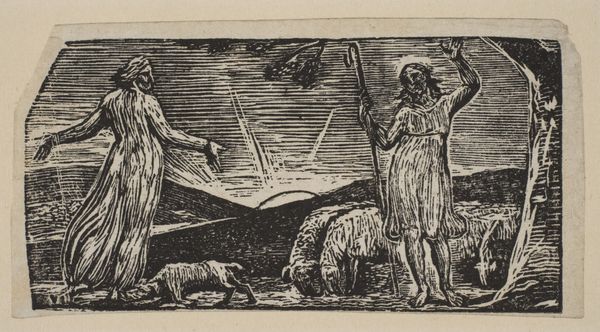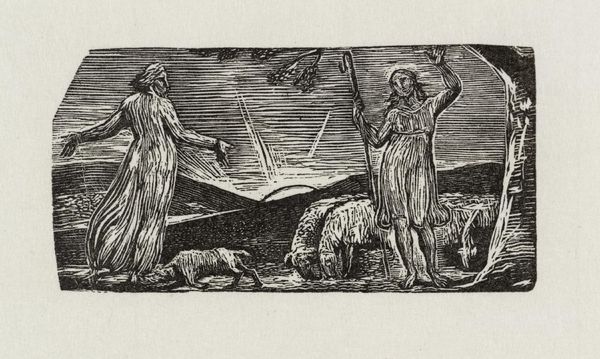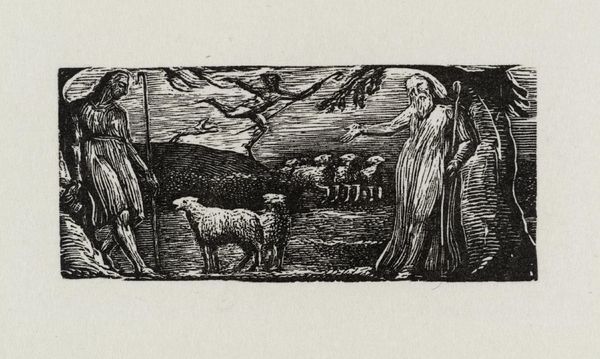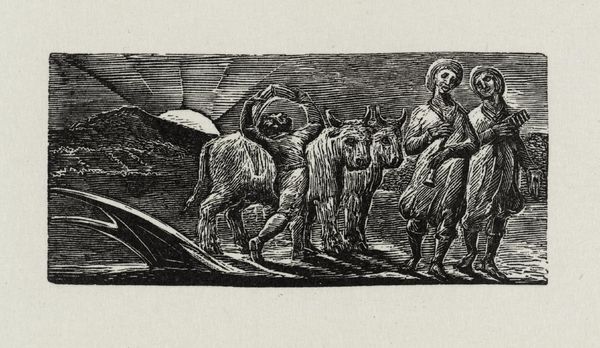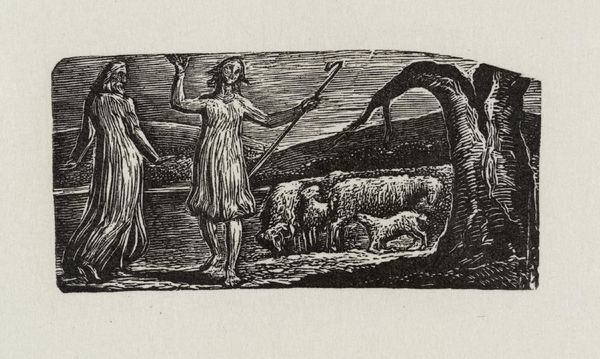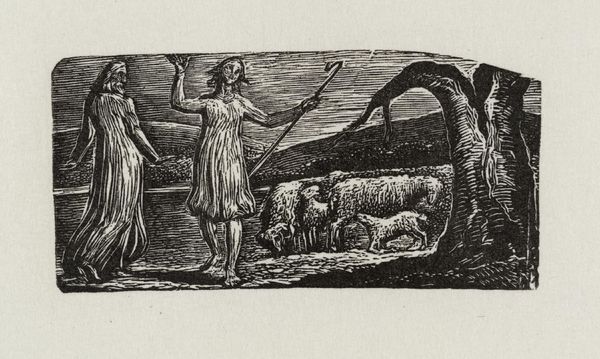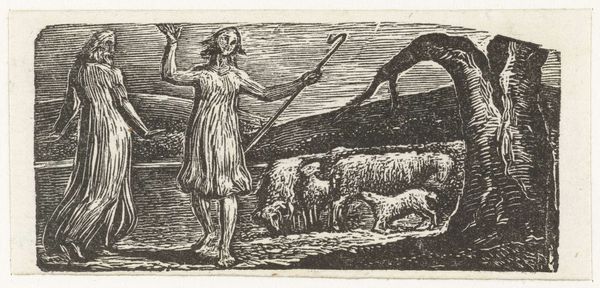
Dimensions: image: 61 x 83 mm
Copyright: NaN
Curator: This is William Blake's "Thenot and Colinet," currently housed at the Tate. Editor: It's so stark! The dense black lines give it a real sense of gravity, almost like a woodcut from a much earlier era. Curator: Indeed, Blake was consciously referencing earlier printmaking traditions to critique contemporary society. The pastoral scene is drawn from Virgil's Eclogues, but Blake complicates its idealized vision. Editor: Look at the way he's rendered the sheep – almost like a solid mass of wool. You can almost feel the labor involved in shearing and processing that fleece. It speaks to the real economic base underlying these supposedly simple, idyllic lives. Curator: Precisely. Blake used these illustrations to comment on power, class, and the artist’s role in shaping cultural narratives. It's not just about pretty landscapes; it's about the social fabric. Editor: Even the figures themselves – the shepherd and the robed figure – have a weight, an earthiness. The materials of their clothing, their relationship to the land, are almost palpable. Curator: Blake always challenged the established art world. By embracing older techniques, he sought to create art for the people, about the people. Editor: It's fascinating to consider the amount of work in this small piece. Gives you a different perspective, doesn't it?
Comments
tate 7 months ago
⋮
http://www.tate.org.uk/art/artworks/blake-thenot-and-colinet-t02115
Join the conversation
Join millions of artists and users on Artera today and experience the ultimate creative platform.
tate 7 months ago
⋮
In 1819 Blake was commissioned to illustrate an ‘Imitation’ by Ambrose Philips of a pastoral poem by the Latin poet Virgil, called the First Eclogue. Philips’s reworking was meant to inspire schoolboy poets to emulate the ancient poets. Virgil’s two farmers, the elderly, happy Tityrus and the young, unhappy Meliboeus, become Thenot and Colinet in Philips’s ‘Imitation’. Blake shows Thenot with a beard. Samuel Palmer described Blake’s wood engravings as ‘ visions of ...corners of Paradise; models of the exquisitest pitch of intense poetry’. The pastoral landscape complements the imagery of Jerusalem. Gallery label, December 2004
